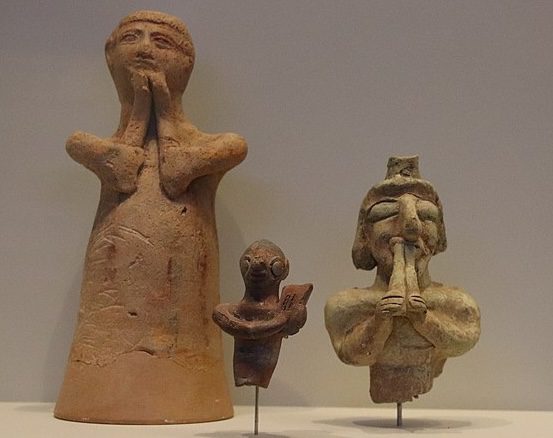Location
Tel Malhata is situated in the Negev desert, on the southern bank of Nahal Malhata, near its confluence with Nahal Beersheba. The site, known for its abundant water sources, was an administrative and economic center for local Bedouin and also served as a central cemetery.


Identification
The site’s biblical identity is debated. It has been suggested as Moladah (Joshua 15:26, 19:2; 1 Chronicles 4:28), Hormah (Numbers 14:45, 21:3; Deuteronomy 1:44), or “Arad of the house of Jeroham.” Its proximity to Horvat ‘Uza (identified with Ramoth-Negev) suggests a possible association with Baalath-Beer (Joshua 19:8), also known as Bealoth (Joshua 15:24).
History and Biblical Context
Tel Malhata’s history spans from the Chalcolithic to the Early Bronze Age, with significant occupation during the Middle Bronze Age IIB and the Iron Age (10th-6th centuries BCE). The site was a fortress during the Middle Bronze Age, likely associated with a large settlement on the opposite bank of the wadi. In the Iron Age, Tel Malhata reached its peak development, with a walled city covering approximately 3.7 acres.
Excavations
Two seasons of excavations were conducted in 1967 and 1971, led by M. Kochavi. Seven more seasons (1990, 1992–1995, 1998, 2000) were conducted by a joint expedition of Tel Aviv University and Baylor University, under the direction of I. Beit-Arieh and B. Cresson. These excavations focused on the lower part of the mound and the top of the eastern slope of the higher part.
Findings



Pottery
- Iron Age Pottery: A significant portion of the pottery found dates from the end of the 8th to the beginning of the 6th century BCE (Iron Age IIB and IIC). This includes various types common at Negev sites.
- Imitation Assyrian Palace Ware: About 50% of the bowls discovered are categorized as “imitation Assyrian Palace ware.”
- Edomite Cooking Pots: Many cooking pots have broad mouths, no necks, and stepped rims, resembling Edomite vessels due to the Nubian sandstone content in their fabric.
- Explicit Edomite Origin: Some pottery pieces, including a decorated krater with triangular lugs and a jar with red geometric lines, are of explicit Edomite origin.
Inscriptions
- Ostraca and Incisions: Twelve inscriptions were discovered, mostly in area H. These include fragmentary ostraca and incisions, some of which were identified as being in Edomite script.
Small Finds
- Clay Figurines: Over 20 clay figurines were found, including a notable figurine depicting a man playing a double flute, with traces of paint on the face. This figurine shows similarities to a macehead found at Horvat Qitmit.
- Shekel Weights: A large group of shekel weights was discovered, some inscribed. One unique unmarked weight equals 130 shekels.
- Seals: Several seals, including two scarabs dated to the 7th century BCE, and an intact signet ring bearing an ostrich image, were retrieved.
- Small Altars: A number of small altars, some decorated by engraving, were found.
- Wooden Furniture and Bone Inlays: Carbonized remains of wooden furniture, including a carved leg, and several dozens of bone inlays, suggest the wealth of the city’s inhabitants.
Architectural Features
- Fortifications: The Iron Age IIB–C city was surrounded by a 3.5-meter-wide brick wall with projecting towers. In area F, the wall was exposed to a height of about 3 meters.
- Buildings: Excavations in area F uncovered building complexes, courtyards, and a street, with some structures abutting the city wall. Two strata (IV and III) were noted, showing both architectural changes and continuities over time.
- Pillared Building: In area A, later phases of a pillared building were uncovered, suggesting its use from the 10th and 9th centuries BCE (stratum V) to the last city of stratum III.
Sources
Stern, Ephraim-New Encyclopedia of Archaeological Excavations in the Holy Land 5 new-Israel Exploration Society (1993,2008)

